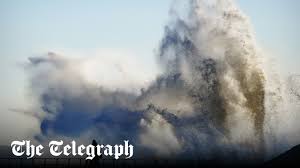U.S. President Donald Trump has reintroduced a wide range of tariffs on imports from dozens of countries. These new taxes on foreign goods were announced just hours before an August 1 deadline to strike new trade deals. The tariffs, which range from 10% to 41%, are part of Trump’s push for what he calls “fair and reciprocal” trade.
The new tariffs mostly apply to countries with which the U.S. has a trade deficit — meaning the U.S. buys more from them than it sells. Countries with which the U.S. has a trade surplus will face lower tariffs, starting at 10%.
In a statement from the White House titled *“Further Modifying the Reciprocal Tariff Rates,”* Trump said these steps are necessary to fix ongoing imbalances in trade. He also said the tariffs are part of a “national emergency” declared in Executive Order 14257.
Most tariffs take effect on August 7, giving U.S. Customs time to adjust.
Tariffs on Canadian goods, however, began immediately on August 1.
Canada faces a sharp increase from 25% to 35%, with the White House accusing Canada of not doing enough to stop fentanyl smuggling into the U.S.
China and Mexico are not included for now, though China could face new tariffs by August 12 if talks fail.
Mexico received a 90-day delay after recent negotiations between leaders.
According to the tariff list, 69 countries will face adjusted rates. Key highlights include:
Australia, UK: 10% tariff
India: 25%
Taiwan: Dropped from 32% to 20%, still higher than Japan and South Korea
Switzerland: Increased from 31% to 39%
Syria and Myanmar:** 41% and 40%, despite ongoing conflicts
Other nations like Iraq, Laos, Serbia, Libya, and South Africa will face tariffs between 30% and 40%
Experts say these changes don’t follow a clear formula. Some countries that negotiated with the U.S. got better deals, while others were hit harder without explanation.
Deborah Elms of the Hinrich Foundation said the original tariff structure at least followed a formula. The new one, she said, “is all over the place.”
Steve Okun of APAC Advisors added, “Each country gets a rate based on how the president views it—trade-related or not.”
Trump first announced these “Liberation Day” tariffs on April 2 but delayed enforcement multiple times. The legal authority for previous tariff rules was set to expire at midnight on August 1. Without new action, old rates would have returned. So, the administration rushed to publish the updated rates before the deadline.
Inu Manak of the Council on Foreign Relations said countries now have until August 7 to negotiate with the U.S. and possibly avoid the new tariffs altogether.
The U.S. is also preparing new rules to identify the true origin of goods, especially for items that are shipped through other countries. This is aimed at closing loopholes where goods appear to come from one country but are actually produced in another.
Trade negotiations are ongoing. Many nations are scrambling to strike deals with the U.S. to avoid the worst of the tariffs.
Meanwhile, uncertainty remains over what rates China and other key partners will face if talks fail in the coming weeks.



